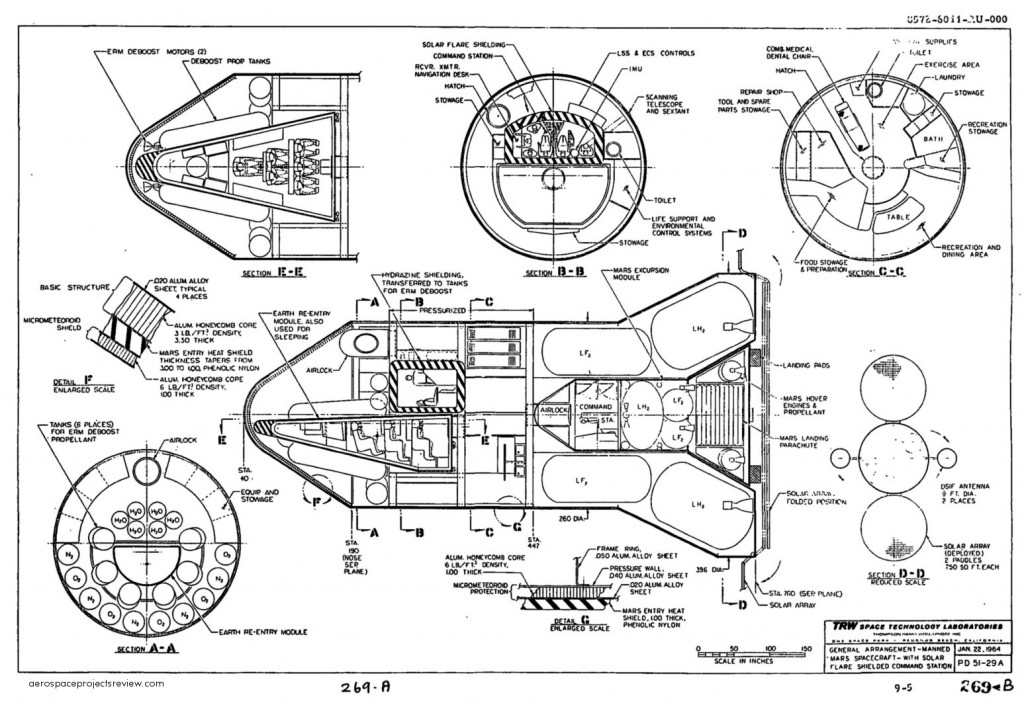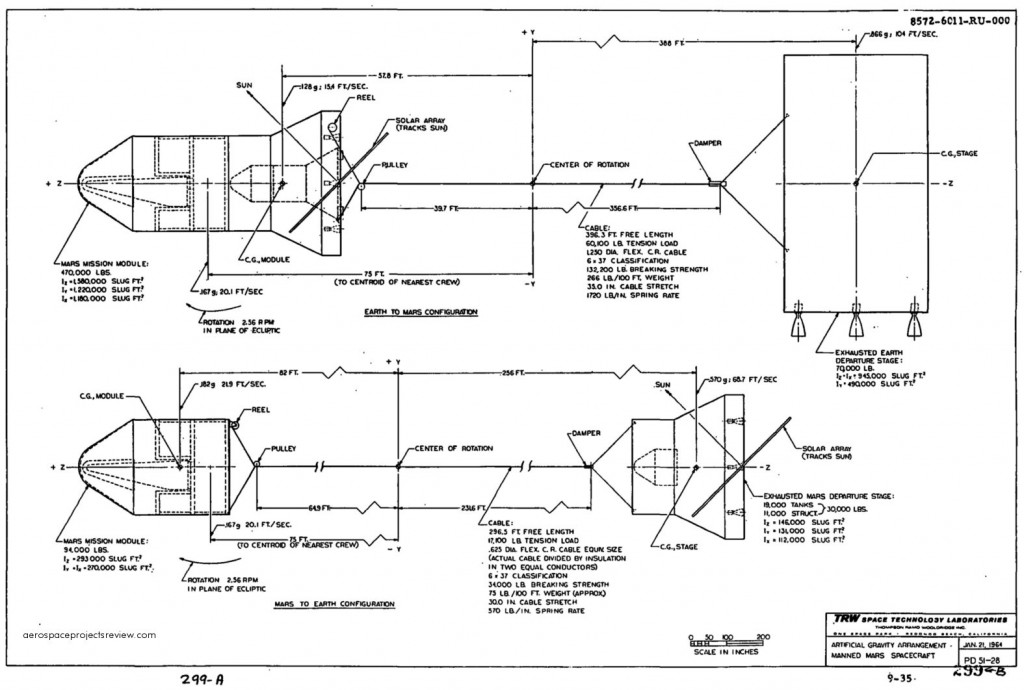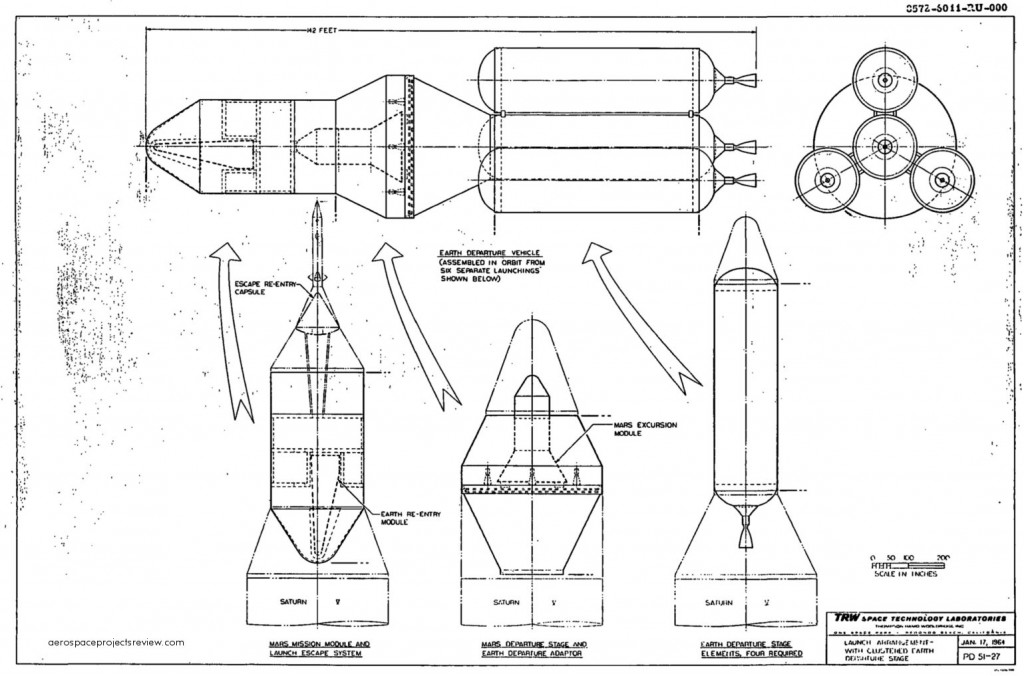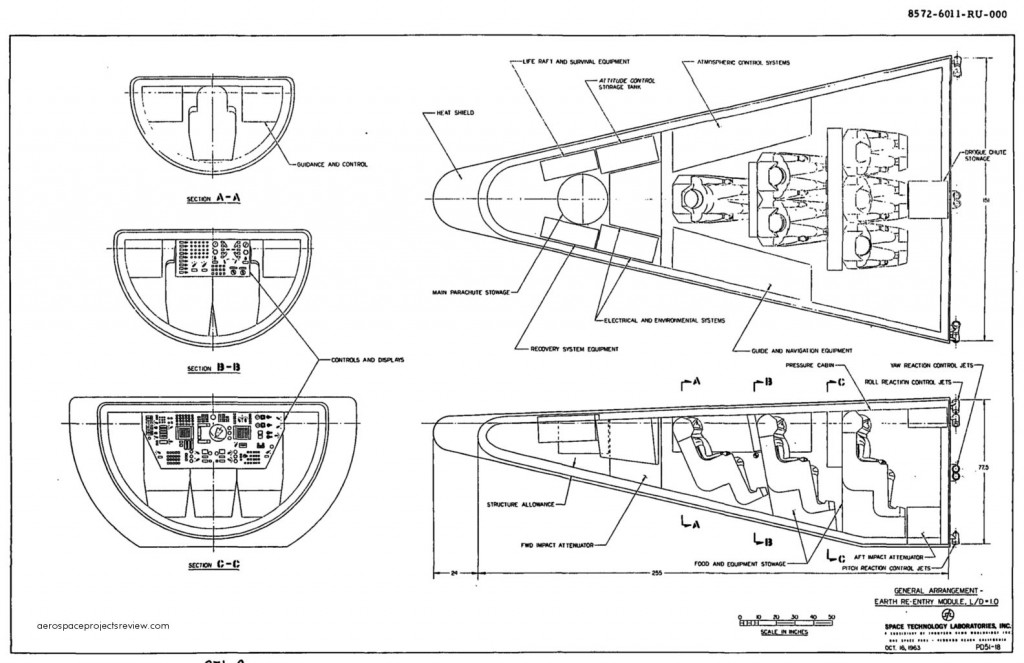A 1963-1964 design from TRW for a manned Mars exploration craft. It, like the NAA biconic design, used aerobraking at Mars. In TRW’s case, they used the same basic aerodynamic configuration that was used on early RVs for American ICBM launched nuclear warheads.
This design could also feature artificial gravity by way of tumbling, using a single 400-foot cable connected to the upper stage used to launch the craft towards Mars. For the trip home, the Mars ship itself would split apart (like the NAA design) and tumble.
The complete spacecraft would require six Saturn V flights to orbit the components which would be assembled in Earth orbit.
And after all that, all that would return to Earth are the six crew and a very small Earth re-entry vehicle. The Mars spacecraft itself would shoot on by Earth without attempting to slow down; the ERV would enter the atmosphere directly from interplanetary space.




Was this designed with the belief that Mars’ atmospheric pressure was about 10% of Earth’s? I believe that was the accepted value prior to Mariner 4’s flyby in July 1965.
I still hope US Space Program and NASA arrive first in Mars landing